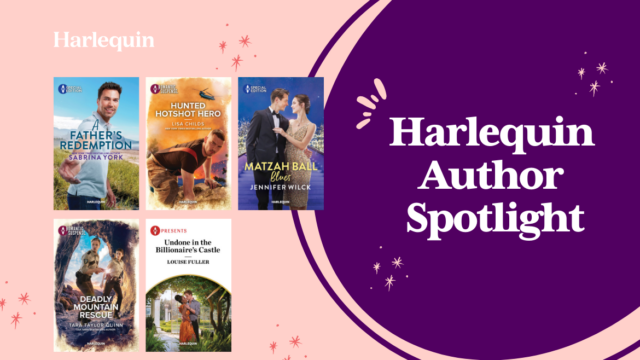by Evan Yeong
The title of this post may hit a bit too close to home for those of us experiencing the middle of yet another frigid winter, but hopefully our tips help you take your mind off the weather! The “slush pile” has nothing to do with snow and ice and everything to do with the dozens of manuscripts we receive every month from promising romance authors just like you. One of my responsibilities as editorial assistant is to review our submissions, and over the past few months I’ve noticed a few mistakes that tend to pop up time and time again.
Today I’m shining a spotlight on three separate pitfalls, ranging from advice for absolutely everyone and narrowing down to writers looking to submit to specific series. I tried not to overlap too much with tips that past blog contributors have shared, but with so many years of SYTYCW this was easier said than done!
Put Your Best Foot Forward
As a former proofreader there’s one truth that has proven itself time and time again: everyone makes mistakes. It doesn’t matter how many books you’ve written over how many decades, typos will slip in and make it past you as the author, your line editor, and the copy editor, until it makes it all the way down to proofreading. Knowing about the several layers of safety nets we have for every book should also hammer home that a few homophone issues won’t lead to us declining your submission.
At the same time, you only have one first impression. Right off the bat, seeing multiple errors in your cover letter is a red flag for editors. While this may not have been your intention, it communicates the idea that you didn’t care enough (or didn’t think) to run a simple spell check before sending it our way. Sure, there’s always the chance that this was an accident, and you had planned on looking over it one more time-

-but we can’t assume that for every single submission. My best recommendation if you feel like you’ve read your work a dozen times already is to find another set of eyes to look over your cover letter, synopsis, and manuscript. After long enough with anything we all become blind to its flaws, so calling in another party is key.
Focus on the Romance
This seems like such obvious advice that it doesn’t bear mentioning, but before enthusiastically filling out that Submittable form it’s a good idea to pause for a second and think. Looking at the story that you want to take all the way from Word document to mass market paperback, is it really a romance?
Absolutely worth noting is that just because your book-to-be features a romantic relationship does not mean that it’s a romance. Take Iron Man, for example. It includes a hero and a heroine in Tony Stark and Pepper Potts, respectively, and even includes a classic trope where a beleaguered assistant falls for the boss who truly can’t function without her (see: Two Weeks Notice).

Yet no one would call the first chapter in the increasingly unwieldy Marvel Cinematic Universe a romance, because it’s not one. Yes, it culminates in a happily ever after where the hero and heroine admit their feelings for one another, but their relationship isn’t central to the movie. The major conflicts include Tony Stark’s very physical conflict with extremists in the desert and an even larger iron man, not his trying to hide his feelings for his personal assistant.
Also I’m sorry about spoilers, but the movie is 12-years-old.
It doesn’t matter if your book is set on a Montana ranch or a Viking outpost in 970 AD, the focus has to be on two people falling in love. Introduced early on, the couple need to have an attraction that grabs our attention and has us invested in whether or not they’ll make it, even though we know that as a romance things will end on a warm and fuzzy (or hot and steamy) note. Once again, there can be romantic elements in your book, but if they’re on the fringes chances are your submission is dead on arrival.
Hot and Heavy, One and Only
This is for those of you who are interested in writing for our series with a higher heat level (Harlequin Presents, Desire, DARE). You want to author books that get readers a little hot under the collar, to pen scenes that people want to read in private, to write about sex. The problem is when it’s your hero or heroine and literally anyone else.
I’m not saying that your heroes or heroines need to be virgins (though the latter could be depending on the series); it’s definitely not uncommon for adults to have slept with other people before they meet the one. I also completely understand the rationale behind sex scenes with different partners establishing the hero or heroine as a skilled lover and helping to stoke the fires before things really start to heat up.

While both of these are true, having the hero have sex with someone who is not the heroine (and vice versa) always muddies the waters of your established romance. Readers are opening up your book to see a relationship develop between two characters, and introducing other partners, even if they’re removed later on down the line, distracts from that.
To be more clear, what we don’t want to see is a sex scene between either member of your couple and another person. They can certainly have slept with other people, and might even still be during the early stages of their relationship, but devoting time to those trysts uses up pages that could be spent building up the romance at the centre of your story.
There you have it, three pieces of advice that I’ve gleaned from sifting through your submissions. Having shared all that, I hope to read many more! We’re always on the lookout for the next author to join Harlequin’s ranks, and there are so many books that are on their way there but haven’t quite made it.
Keep submitting, and keep reading this blog! Feel free to trawl the archives to get more tips on how to refine your submissions, like this primer on avoiding romance clichés, or editor Patience Bloom’s post on her romance pet peeves. Above all else, keep writing, and don’t give up! You can only get better the more you practice.



